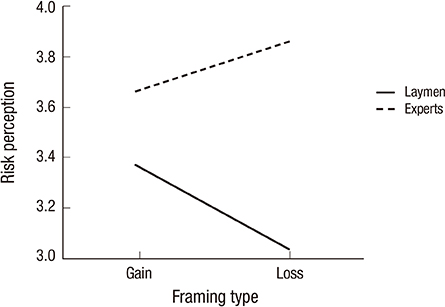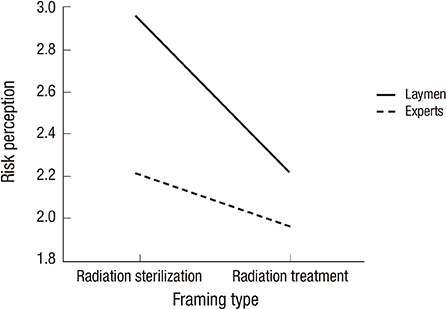J Korean Med Sci.
2016 Feb;31(Suppl 1):S88-S98. 10.3346/jkms.2016.31.S1.S88.
The Radiation Problem and Its Solution from a Health Communication Perspective
- Affiliations
-
- 1School of Communication and Media, Ewha Womans University, Seoul, Korea. kimyw@ewha.ac.kr
- KMID: 2363385
- DOI: http://doi.org/10.3346/jkms.2016.31.S1.S88
Abstract
- This paper observes both foreign and national discussions on preexisting radiation communication and attempts to find out what it takes to ensure that discussion concerning radiation leads to participation of and trust-building with members of society while considering cultural aspects. When analyzing Korean studies on health risk communication concerning radiation which utilize the frame of foreign literature, Korean studies can be categorized into one of the following themes: different risk perceptions between experts and the general public, discussion on the effects of the framing of radiation messages and media coverage, and research discussing the social implications of the dangers of radiation and the need for effective communication. These study results can be better explained when integrated with Korean social cultural dimensions. The "boiling pot effect" towards risk issues, egalitarian perceptions, escalation of ideological opposition and biased reasoning, and so on are especially major influences. Communication addressing radiological risks must foremost be open and able to mitigate distrust, must give the general public a chance to judge for themselves to prevent stigmatization, and, through the use of media and public education, must make efforts to prevent the proliferation of needless anxiety. Using literature research, this paper discusses possible ways to improve the effect of future health risk communication concerning radiation.
Figure
Reference
-
1. Park J. The social construction of risk perception: a comparison between risk perceptions of nuclear power plants after the Chernobyl and the Fukushima nuclear accident. Environ Philos. 2013; 15:117–143.2. Jin S. An analysis on Koreans’ perception types of nuclear power after the Fukushima accident. Korean Public Adm Q. 2012; 24:1011–1038.3. Kim H, Ha H, Choi J. Comparing communication models (PUS vs. PEP/IS) for radiation science: an experimental study. Korean J Journal Commun Stud. 2011; 55:215–232.4. Han EO, Kim JR, Choi YS. Different perceptions, knowledge, and attitudes of elementary, middle, and high school students regarding irradiated food, nuclear power generation, and medical radiation. J Radiat Prot. 2014; 39:118–126.5. Yoon YS, Kim J, Kim H, Choi I, Sung D, Do K, Jung S, Kim H. Report for spreading culture of medical radiation safety in Korea: mainly the activities of the Korean alliance for radiation safety and culture in medicine (KARSM). J Radiol Sci Technol. 2013; 36:193–200.6. Kim H, Kim M. Consumers’ attitude to purchase irradiated foods and analysis of factors to distinguish acceptor groups. Korean J Food Cult. 1999; 14:289–304.7. Best J. Damned lies and statistics: understanding numbers from the media, politicians, and activists. Oakland, CA: University of California Press;2001.8. Cohen B. Nuclear journalism: lies, damned lies, and news reports. Policy Rev. 1983; 26:70–74.9. Kim Y. Risk communication. Seoul: Communication books;2014.10. Bauer MW. The evolution of public understanding of science-discourse and comparative evidence. Sci Technol Soc. 2009; 14:221–240.11. Burns TW, O’Connor DJ, Stocklmayer SM. Science communication: a contemporary definition. Public Underst Sci. 2003; 12:183–202.12. Raza G. Introduction: mapping public understanding of science. Sci Technol Soc. 2009; 14:211–219.13. Cho SK. Science communication as a practice of science culture. J Sci Technol Stud. 2007; 7:151–175.14. Slovic P. Perception of risk from radiation. Radiat Prot Dosimetry. 1996; 68:165–180.15. Perko T. Radiation risk perception: a discrepancy between the experts and the general population. J Environ Radioact. 2014; 133:86–91.16. Sjöberg L. Risk perception: experts and the public. Eur Psychol. 1998; 3:1–12.17. Slovic P. The perception gap: radiation and risk. Bull At Sci. 2012; 68:67–75.18. Bruhn CM, Schutz HG, Sommer R. Attitude change toward food irradiation among conventional and alternative consumers. Food Technol. 1986; 40:86–91.19. Covello VT. Risk communication, radiation, and radiological emergencies: strategies, tools, and techniques. Health Phys. 2011; 101:511–530.20. Hunt S, Frewer LJ. Public trust in sources of information about radiation risks in the UK. J Risk Res. 1999; 2:167–180.21. Oughton DH, Howard BJ. The social and ethical challenges of radiation risk management. Ethic Policy Environ. 2012; 15:71–76.22. Kim Y. Risk, crisis and communication. Seoul: Ewha Press;2008.23. Slovic P, Layman M, Kraus N, Flynn J, Chalmers J, Gesell G. Perceived risk, stigma, and potential economic impacts of a high-level nuclear waste repository in Nevada. Risk Anal. 1991; 11:683–696.24. Flynn J. Nuclear stigma. Cambridge: Cambridge University Press;2003.25. Jenkins-Smith H. Modeling stigma: an empirical analysis of nuclear waste images of Nevada. In : Flynn J, Slovic P, Kunreuther H, editors. Risk, media, and stigma: understanding public challenges to modern science and technology. London: Earthscan;2001. p. 107–132.26. Kahneman D, Tversky A. Prospect theory: an analysis of decision under risk. Econometrica. 1979; 47:263–292.27. Meyerowitz BE, Chaiken S. The effect of message framing on breast self-examination attitudes, intentions, and behavior. J Pers Soc Psychol. 1987; 52:500–510.28. Rothman AJ, Salovey P. Shaping perceptions to motivate healthy behavior: the role of message framing. Psychol Bull. 1997; 121:3–19.29. Bruhn CM, Schutz HG, Sommer R. Attitude change toward food irradiation among conventional and alternative consumers. Food Technol. 1986; 40:86–91.30. McNeil BJ, Pauker SG, Sox HC Jr, Tversky A. On the elicitation of preferences for alternative therapies. N Engl J Med. 1982; 306:1259–1262.31. Dunwoody S, Peters HP. Mass media coverage of technological and environmental risks: a survey of research in the United States and Germany. Public Underst Sci. 1992; 1:199–230.32. Kasperson JX, Kasperson RE, Perkins BJ, Renn O, White AL. Media risk signals and the proposed yucca mountain nuclear waste repository. In : Kasperson JX, Kasperson RE, editors. The social contours of risk: publics, risk communication & the social amplification of risk. London: Earthscan;2005. p. 133–160.33. Dunwoody S, Scott BT. Scientists as mass media sources. Journalism Mass Commun Q. 1982; 59:52–59.34. Rothman S, Lichter SR. Elite ideology and risk perception in nuclear energy policy. Am Polit Sci Rev. 1987; 81:383–404.35. Peters HP, Albrecht G, Hennen L, Stegelmann HU. ‘Chernobyl’ and the nuclear power issue in West German public opinion. J Environ Psychol. 1990; 10:121–134.36. Lee S, Kim Y. A co-orientation study on perceptions towards science communication: the comparison between experts and the general public about nuclear risk communication. Korean J Journal Commun Stud. 2012; 56:31–57.37. Kim CG. University students’ awareness of radiation. J Korea Converg Soc. 2012; 3:27–42.38. Lee M. The influence of online news and replies on risk perception: Focusing on news-reply correspondence and reply writer expertness. J Media Econ Cult. 2014; 12:119–153.39. Oh MY, Choi J, Kim HS. Stigma effect of technology with risk: the impact of stigma on nuclear power on the perception and acceptance of products based on radiation technology. Korean J Journal Commun Stud. 2008; 52:467–500. 51840. Kim HJ, Kim YW. The interaction effects of message framing, risk types and audience expertise on risk perception in risk communication: an analysis of radiation risks. J Public Relat Res. 2013; 17:143–183.41. Shim J. Trust in nuclear power plant, perceived risk and benefit, and acceptance. Korean Policy Stud Rev. 2009; 18:93–122.42. Kim S, Kim G. Beyond the risk and benefit: The effect of empirical emotion heuristic for acceptance in nuclear power plant. Korean Public Adm Rev. 2007; 4:373–398.43. Lee J. The effect of media modality and the valence of risk messages on affective risk perception and behavioral intention. Korean J Cogn Sci. 2012; 23:457–485.44. Lee S. Analysis on negative media report of Wolsong Nuclear Power Plant’s heavy water leakage: analysis on daily newspaper report of Wolsong Nuclear Power Plant’s heavy water leakage incident during the month of October 1999. J Energy Eng. 2012; 21:203–210.45. Min J, Kim Y. A study on Korean newspaper’s news frames of Japanese 2013 nuclear plant accidents. Jpn Mod Assoc Korea. 2014; 44:413–434.46. Yang EK. Exploring nationalist outlook in relation to media coverage of global risk: discourse analysis of KBS <News 9> on Fukushima nuclear accident. Korea J Broadcast Telecommun Stud. 2014; 28:206–244.47. Cho EH. News analysis about earthquake and nuclear crisis in Japan. J Inst Soc Sci. 2012; 23:117–143.48. Kim WY, Lee DH. A comparative study on the frame of various news media: a frame analysis of the domestic nuclear news. Korea J Broadcast Telecommun Stud. 2005; 19:168–213.49. Jin DY, Ko YJ. Analysis of TV news of the nuclear waste storage facility: TV news reporting of Boo-An case and Gyeong-Ju. Med Soc. 2012; 20:5–45.50. Park BJ. Analysis of public perception on radiation: with one year after Fukushima nuclear accident. J Radiat Prot. 2012; 37:1–9.51. Lee JR, Lim SH, Shin TS. The tsunami-devastated Fukushima nuclear power plant accident and media discourse. Speech Commun. 2011; 16:188–213.52. Cha YR, Yu HJ. Exploring mechanics of information seeking, and processing besides transmission dealing with issue of foods contaminated by radioactivity: focusing on the effects of news valence frames and trust in government agencies on credibility of news articles. Korean J Journal Commun Stud. 2012; 56:92–120.53. Lee HJ, Park ST. Comparison of perception differences about nuclear energy in 4 East Asian country students: aiming at 10th grade students who participated in scientific camps, from four East Asian countries: Korea, Japan, Taiwan, and Singapore. J Korean Assoc Res Sci Educ. 2012; 32:775–788.54. Cho GH, Kim EJ. Cultural dispositions and conformity to peers. Korean J Soc Psychol. 2001; 15:139–165.55. Douglas M, Wildavsky A. Risk and culture: an essay on the selection of technological and environmental dangers. Berkeley, CA: University of California Press;1982.56. Lupton D. Risk. London: Routledge;2013.57. Solomon S, Greenberg J, Pyszczynski T. Pride and prejudice: fear of death and social behavior. Curr Dir Psychol Sci. 2000; 9:200–204.58. Park TK. Industry academic forum: Irradiated food and media public relations strategy. Food Preserv Process Ind. 2010; 9:70–74.59. Lidskog R. Scientised citizens and democratised science. Re-assessing the expert-lay divide. J Risk Res. 2008; 11:69–86.60. Rabinovich A, Morton TA. Unquestioned answers or unanswered questions: beliefs about science guide responses to uncertainty in climate change risk communication. Risk Anal. 2012; 32:992–1002.61. Morgan MG, Fischhoff B, Bostrom A, Atman CJ. Risk communication: a mental models approach. Cambridge: Cambridge University Press;2002.62. Zillmann D. Exemplification effects in the promotion of safety and health. J Commun. 2006; 56:S221–37.63. Coleman R, Thorson E, Wilkins L. Testing the effect of framing and sourcing in health news stories. J Health Commun. 2011; 16:941–954.
- Full Text Links
- Actions
-
Cited
- CITED
-
- Close
- Share
- Similar articles
-
- The Effects of Team-based Simulation Education on Problem Solving Process, Communication Ability and Communication Confidence of Nursing Students
- The Effects of Parent-Adolescent Communication on Self-Concept and Problem Behavior
- Effects on Nursing Student’S Communication Competence, Interpersonal Relationship, and Information Literacy Competency on Problem Solving Ability
- Effect on Problem-Based Learning with Simulation in Nursing Student According to Team Activity Satisfaction: Self-Directed Learning Ability, Communication Apprehension
- The Effects of Action-Learning based Simulation Practice Program on Interpersonal Communication Competence and Problem Solving Ability of the Nursing Students



